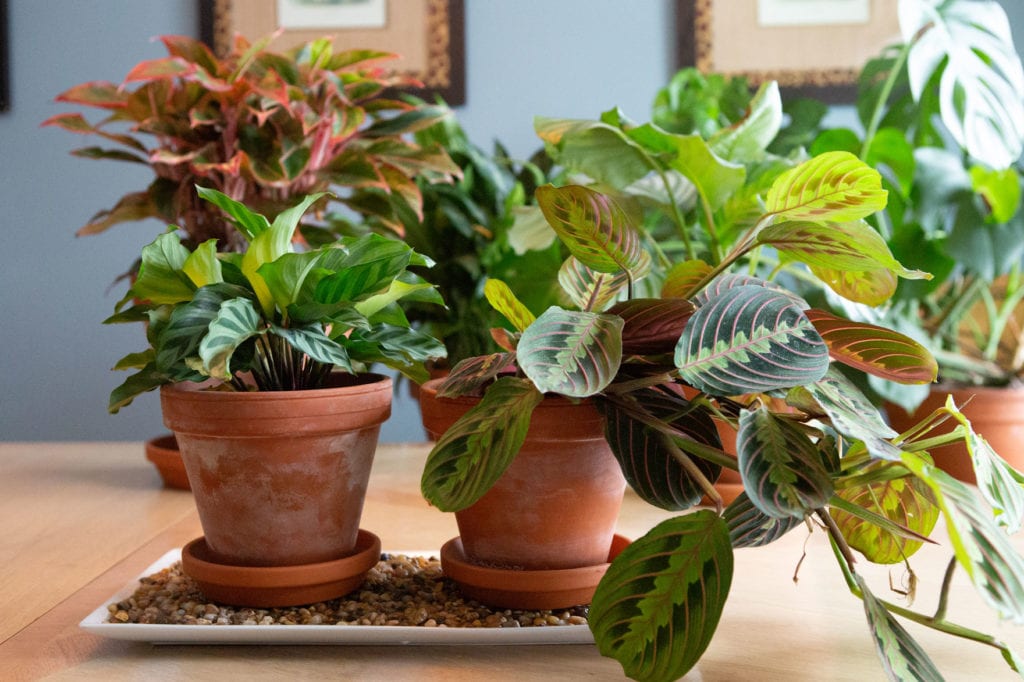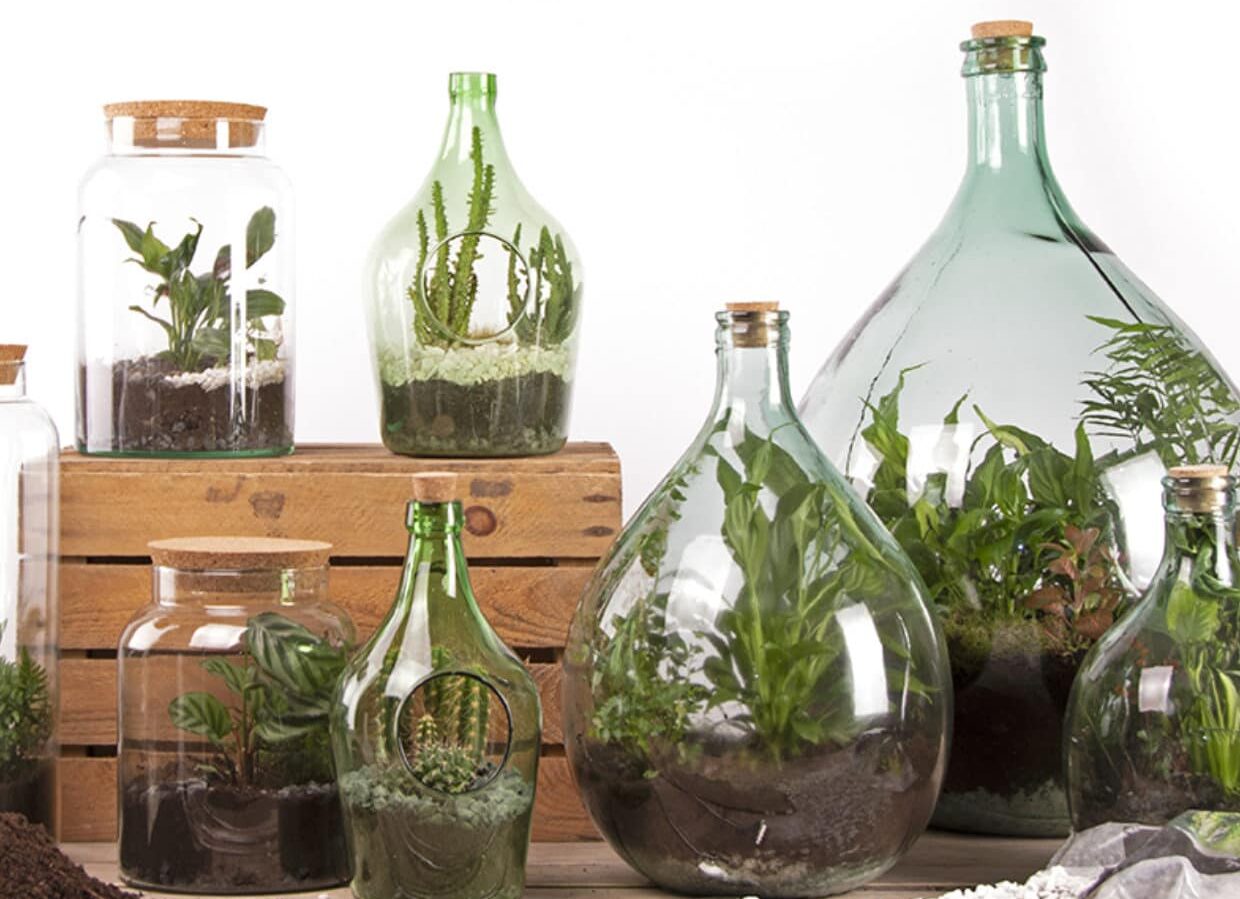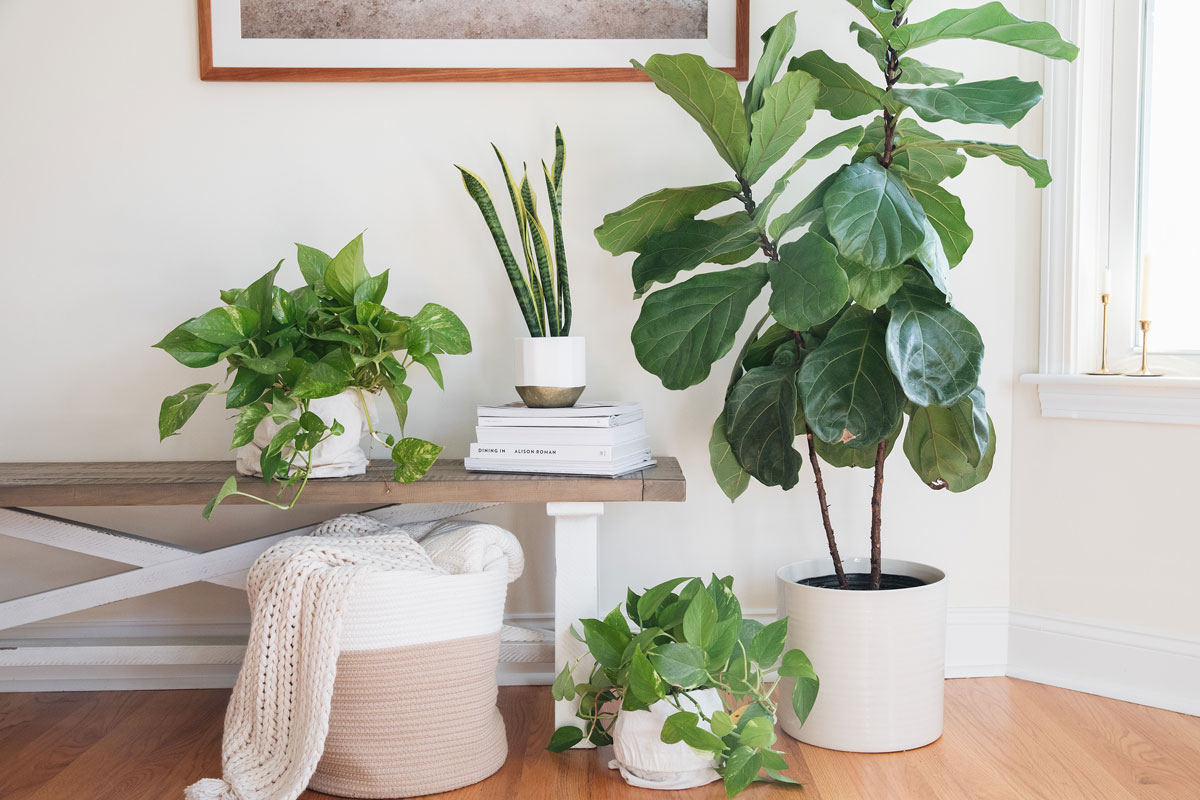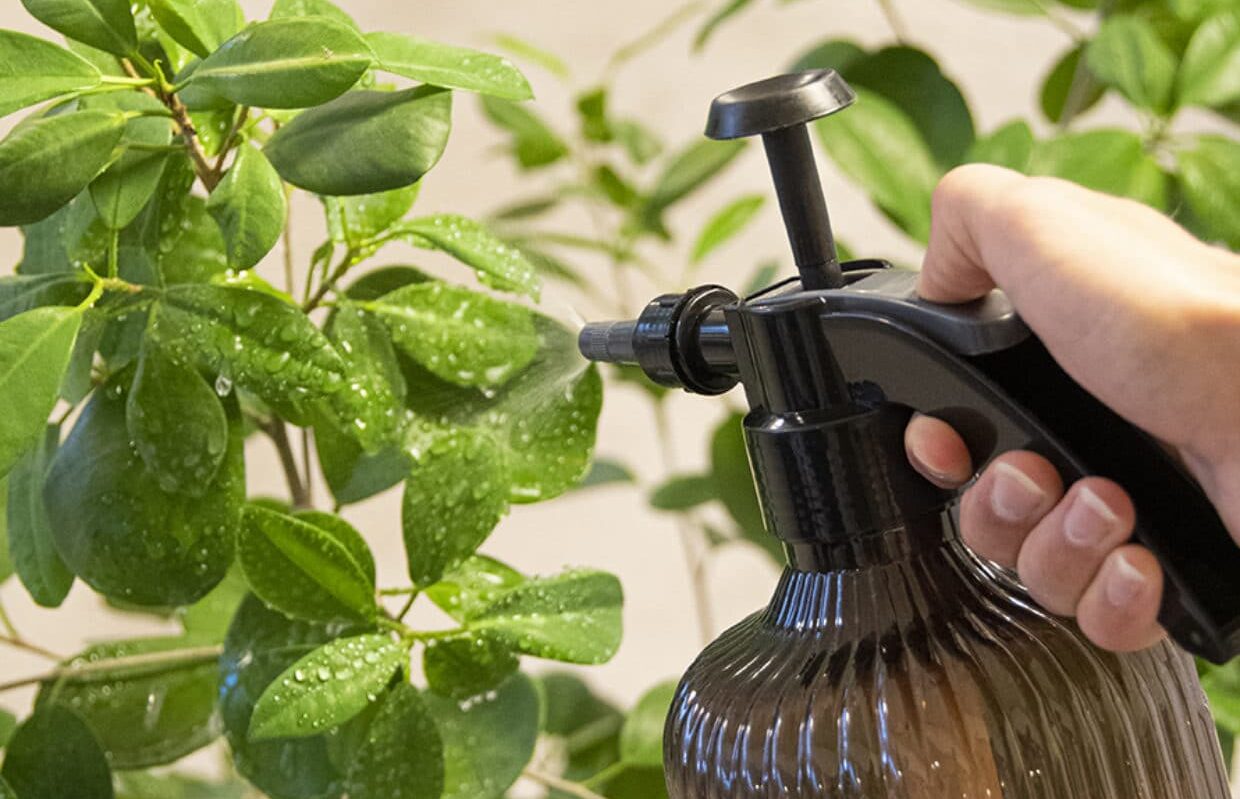Many indoor plants originate from tropical locations where they live beneath the forest canopy. These plants thrive in warmer temperatures and lower light conditions, which is why they are so suitable as houseplants. This also means that they benefit from higher levels of humidity. This can become a problem when we use air-conditioning and heaters to regulate the temperatures inside our homes. These appliances are known to remove most of the moisture in the air.
Here are some tips to increase humidity for your indoor plants and to create a more pleasant environment for you and your plants.
1. Group your plants
Plants lose water through their leaves; this process is known as transpiration. By grouping your plants together, you will be creating a bubble where your plants will feed off of each other. The amount of transpiration increases, and humidity levels will improve significantly.
The drawback to this method is that you need to have multiple plants in the same spot. If you just have one or two plants, you can try out some of the next tips.
2. Mist your houseplants
The first option many people think of to increase humidity for their indoor plants is to mist them. Using a simple spray bottle or mister, you can spray the air around your houseplants and spray directly onto the plants.
This method is easy and quick, but the effects will only last for a few hours, therefore, you will need to repeat this process as needed. It’s also important not to over-do it with misting as if the leaves are exposed to water for too long, they might develop a fungal or bacterial disease. Misting in the morning is ideal so that all the water evaporates during the day.
3. Use a humidifier
The ultimate no fuss option to increase humidity for your houseplants is to get a humidifier. These can be small and discrete and can be turned on or off to create the perfect level of humidity in a room for you and your plants.
4. Put Houseplants In Your Bathroom
Your bathroom is most likely the most humid room in your house. If your bathroom gets a good amount of natural light, this room might have the perfect conditions for most house plants. The humidity levels created by daily showers and baths help your plants thrive.
The wet environment created by sinks, baths and showers means there is usually some area of your bathroom that is in the process of drying during the day. Even wet towels are a significant source of moisture entering the air.
5. Use A Pebble Tray

A pebble tray is a really simple way to increase local humidity for one or a small number of plants. All you need is a tray that is about twice the diameter of the base of the plant pot. It should be at least an inch deep to ensure that the water does not evaporate too quickly. Scatter some pebbles on the base of the tray and fill the tray with water to just below the top of the pebbles. Place your houseplant pot on top of the pebbles so that it rests securely, without the base of the pot being in water.
The main drawback of this method is that there will be a constant pool of standing water around your houseplant. This can increase the risk of fungal or bacterial disease developing in your plants and can sometimes attract pests. However, as a quick, simple solution, that needs minimal maintenance other than to top up the pebble tray when getting low, it’s a great option.
6. Give Them A Bath Or Shower
If you want to get two jobs done in one go, you can put houseplants in your bath or shower and give them a rinse down. This not only cleans the leaves, which is a good thing to do to keep your houseplants in top shape, but drenching the foliage and soil of your plants. This will lead to increased evaporation and local humidity over the next few days.
7. Use A Terrarium

Terrariums are such fun to design and build and it is no wonder they have become very popular in recent years. They can either be open or closed, providing moderate or very high humidity levels within their respective micro-climates.
Closed terrariums provide exceptionally high humidity levels and won’t be suitable for all houseplants. However, you certainly won’t need to worry about insufficient humidity. The air will be near fully saturated with water vapor in this environment.
8. Dry Clothes In The Same Room As Your Houseplants
Wet laundry is a great source of water vapor that your plants will love you for. Just set up a drying rack near your houseplants or move your houseplants into the room you dry clothes in. The water evaporating from your clothes will increase the humidity level in the air and your plants can benefit.

